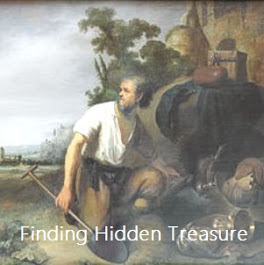150th Anniversary of the Fulton Street Revival
 One hundred fifty years ago today, a prayer meeting started in New York City which was a catalyst for a worldwide revival. A lay missionary named Jeremiah Lanphier started a one hour prayer meeting in a room at the Old Dutch Reformed Church in lower Manhattan. He designed the time for the prayer meeting to coincide with lunch time for the workers in the area. During that first hour-long meeting, Lanphier was the only one in attendance. However, by 1pm, there were six others who joined.
One hundred fifty years ago today, a prayer meeting started in New York City which was a catalyst for a worldwide revival. A lay missionary named Jeremiah Lanphier started a one hour prayer meeting in a room at the Old Dutch Reformed Church in lower Manhattan. He designed the time for the prayer meeting to coincide with lunch time for the workers in the area. During that first hour-long meeting, Lanphier was the only one in attendance. However, by 1pm, there were six others who joined. RELIGIOUS REVIVALS – There is an interesting religious revival at the Woodward Avenue M.E. [Methodist Episcopal] Church of which Rev. Mr. Blades is pastor – Meetings are held every evening at 7 o’clock. About fifty persons have been added to the church within the past four weeks, more than three fourths of whom are heads of families.
There is also a revival at the First Presbyterian Church (Rev. Dr. Duffield’s.) Prayer meetings are held morning and evening.
As the interest in the revival, church buildings were no longer the only sites of the prayer meetings. The New York Times of March 20, 1858 reported:
Churches are crowded; bank-directors rooms become oratories; school houses are turned into chapels.
Places associated with worldliness became sites of prayer. One example was Burton’s Theatre in New York. The Times’ account stated:
Instead of noisy laughter, excited by play-actors, in low comedy and farce, those present listen quietly and seriously to earnest words from earnest men on the most solemn and earnest of themes.
The work originated with, and has been sustained by, prayer. This is its universal characteristic; and the fact admits of no doubt.
Evans asked his audience to ponder several questions. First, he asked: ‘Do we need such a revival, such manifest and manifold tokens of the power of the Divine Spirit?’ His implicit answer was ‘yes.’ He pointed to opportunities to spread the Gospel in previously closed lands such as China, Japan and the ‘wilds of Africa.’ Yet, English society had devolved into ignorance and indifference. Evans painfully noted:
Upon millions in this land of ours religious truth has exerted no saving influence. …Glance for a moment at the majority in our congregations, gradually ripening for perdition under the ministry of the Word, perishing amidst the atmosphere of prayer, and dying within sight of the fountain of healing and eternal life!
His third and final question: ‘Will you seek one [revival]?’ He challenged his audience to adopt the thinking that ‘Holier and higher motives must prompt our actions, and mould our character.’
Perhaps the main and telling feature of the spread of the prayer revival was that when Christians heard about the revival in other places, they did not treat the news as merely some point of quaint interest. They desired the same blessing of revival in prayer for their land. As we celebrate the 150th anniversary of the Fulton Street Revival and the triggering of a worldwide revival in the English-speaking world, I pray that we who read this account will be moved to a holy desire to see such revival visited upon our nations in the early 21st century.
If you wish to read more about the prayer revivals of 1857, may I suggest that you read the article Prayer Revivals and the Third Great Awakening in the Evangelical Review of Theology (Volume 31, No. 1 - January 2007)
The inset picture is a photograph of Jeremiah Lanphier, seated in the prayer room at the Old Dutch Reformed Church in New York City.


No comments:
Post a Comment